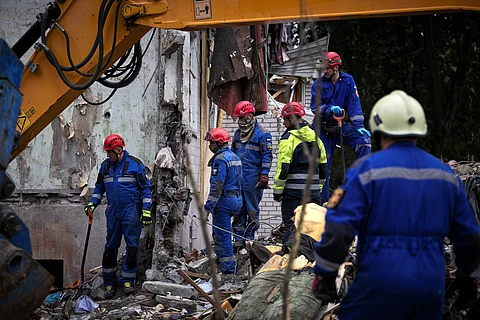

As Donald Trump and Vladimir Putin prepare for their meeting in Alaska on August 15, the war in Ukraine is entering a delicate phase. While the official aim of the summit is to “listen,” the stakes are far higher. On the battlefield, neither side is achieving decisive breakthroughs, and on the diplomatic front, Kyiv’s messaging shows signs of tactical adjustment.
Ukraine’s leadership still rejects any formal cession of territory, but conversations among Western leaders now openly reference the line of contact as a possible basis for discussions. For Russia, this is a sign that its military position is shaping diplomatic realities, even if Kyiv and its allies frame it as a temporary measure.
The choice of Alaska as the venue is not just logistical. As former Russian territory, it serves as a quiet reminder of Moscow’s historic reach. The summit’s format is direct engagement between Washington and Moscow without Ukrainian participation. This tilts the diplomatic stage in Russia’s favor.
Trump has suggested he can quickly assess Putin’s intentions and is open to exploring territorial arrangements. The very act of discussing such ideas in high-level United States–Russia talks signals a shift from the early-war mantra that all of Ukraine’s land must be restored before negotiations.
German Chancellor Friedrich Merz has publicly stated that Ukraine is ready to discuss territorial issues, while stressing that the starting point must be the line of contact. He was clear that legal recognition of territories occupied by Russia is not part of the discussion, but his remarks acknowledge that the military reality cannot be ignored.
This reflects a broader European trend: public insistence on Ukrainian sovereignty paired with growing willingness to shape peace terms around the current battlefield situation.
President Volodymyr Zelensky has been careful to publicly reaffirm Ukraine’s claims over all its territories. In his own words:
We will not give up any lands because these lands belong to Ukraine. The only ‘winner’ in the negotiations with Trump is Putin, who tries to manipulate everyone he interacts with. There must be a lasting ceasefire before anything related to territories can be discussed, and our current battlefield situation is not as bad as people say.
President of Ukraine, Zelensky
In a separate comment after speaking to Trump, Zelensky said:
We discussed the situation at the front line. I told Trump that Putin is bluffing.
President of Ukraine, Zelensky
These statements allow Zelensky to project strength domestically while leaving room internationally for phased discussions that might begin with a ceasefire based on the existing lines.
Freezing conflicts along lines of contact is not new in modern geopolitics:
Korean Peninsula (1953): Armistice halted the war but left both sides claiming the entire territory.
Transnistria (1992): Moldovan territory remains under pro-Russian administration without recognition.
Cyprus (1974): The island remains divided despite decades of UN mediation.
These cases show that once a de facto border is accepted as the basis for negotiations, it often becomes the long-term reality.
By Youp Troost, IBN Political Correspondent
The combination of Merz’s remarks, Zelensky’s careful language, and the United States–Russia meeting without Ukrainian participation highlights a shift in the war’s political tempo. Russia’s military control over occupied territories has become the reference point for diplomatic discussions, even among Kyiv’s closest allies.
For Moscow, this is a validation of its endurance strategy. It has forced both Washington and key European capitals to acknowledge that any future settlement will need to account for Russia’s current territorial holdings.
For Ukraine, the balancing act is delicate: maintain public defiance to preserve morale, while signaling enough flexibility to keep Western backers engaged and the diplomatic channels open. The Alaska meeting will not end the war, but it may set the framework for what comes after, and that framework increasingly resembles a frozen conflict favorable to Russia.
The Alaska summit comes at a time when the military stalemate is slowly shaping political realities. The discussion of the line of contact as a starting point, even without legal recognition of Russian sovereignty, signals that Western unity on Ukraine’s maximalist goals is softening.
History suggests that when conflicts freeze along existing lines, they often stay that way for decades. Whether this becomes Ukraine’s fate may be decided not only on the battlefield, but in meeting rooms far from Kyiv, with Alaska possibly being the first of those decisive rooms.